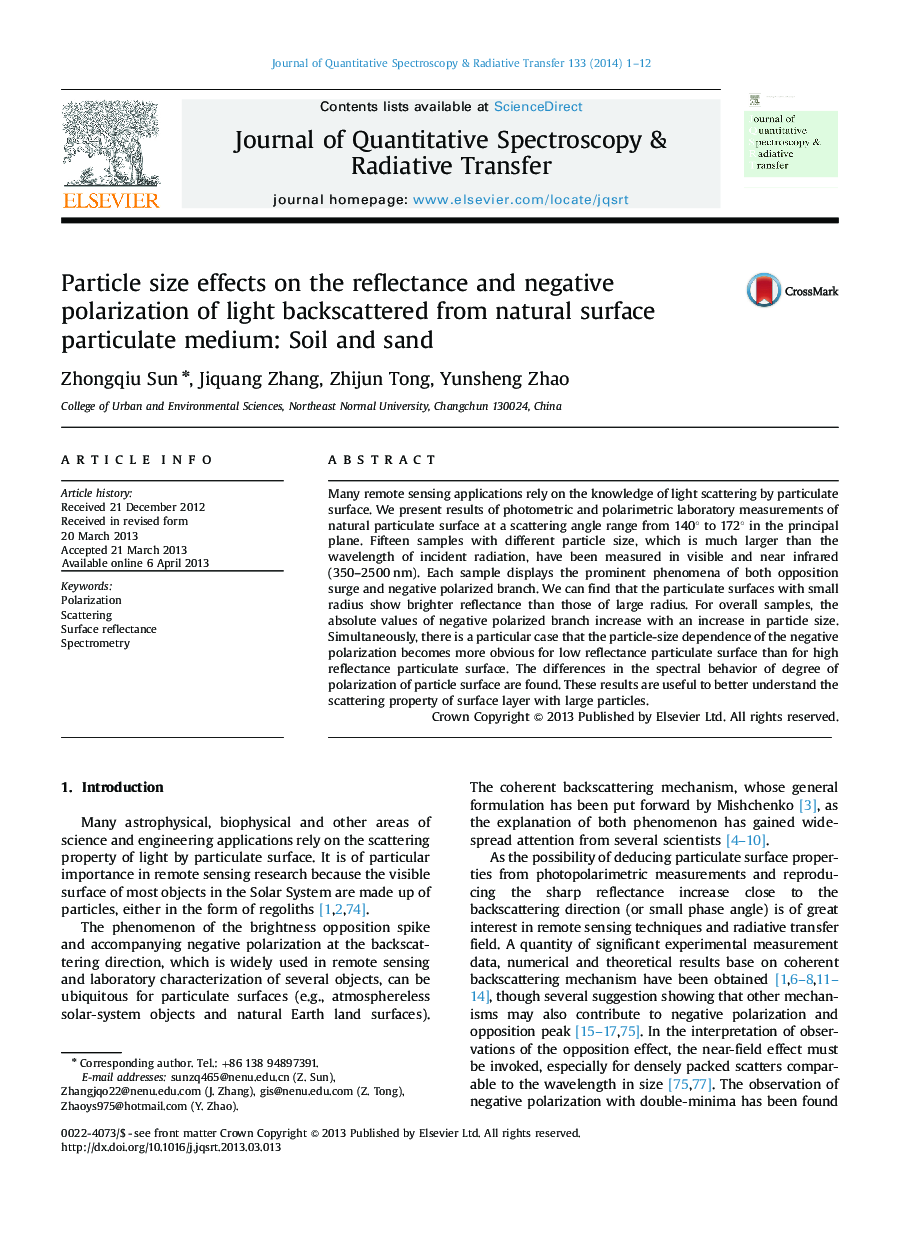| Article ID | Journal | Published Year | Pages | File Type |
|---|---|---|---|---|
| 5428537 | Journal of Quantitative Spectroscopy and Radiative Transfer | 2014 | 12 Pages |
â¢The scattering properties of particulate surfaces were measured in backward direction.â¢The particles constituting the surfaces are much larger than the incident wavelength.â¢We described the scattering angle dependence of reflectance and negative polarization of particulate surfaces.â¢We analysis the effects of particle size and wavelength on the optical properties of particulate surfaces.
Many remote sensing applications rely on the knowledge of light scattering by particulate surface. We present results of photometric and polarimetric laboratory measurements of natural particulate surface at a scattering angle range from 140° to 172° in the principal plane. Fifteen samples with different particle size, which is much larger than the wavelength of incident radiation, have been measured in visible and near infrared (350-2500 nm). Each sample displays the prominent phenomena of both opposition surge and negative polarized branch. We can find that the particulate surfaces with small radius show brighter reflectance than those of large radius. For overall samples, the absolute values of negative polarized branch increase with an increase in particle size. Simultaneously, there is a particular case that the particle-size dependence of the negative polarization becomes more obvious for low reflectance particulate surface than for high reflectance particulate surface. The differences in the spectral behavior of degree of polarization of particle surface are found. These results are useful to better understand the scattering property of surface layer with large particles.
